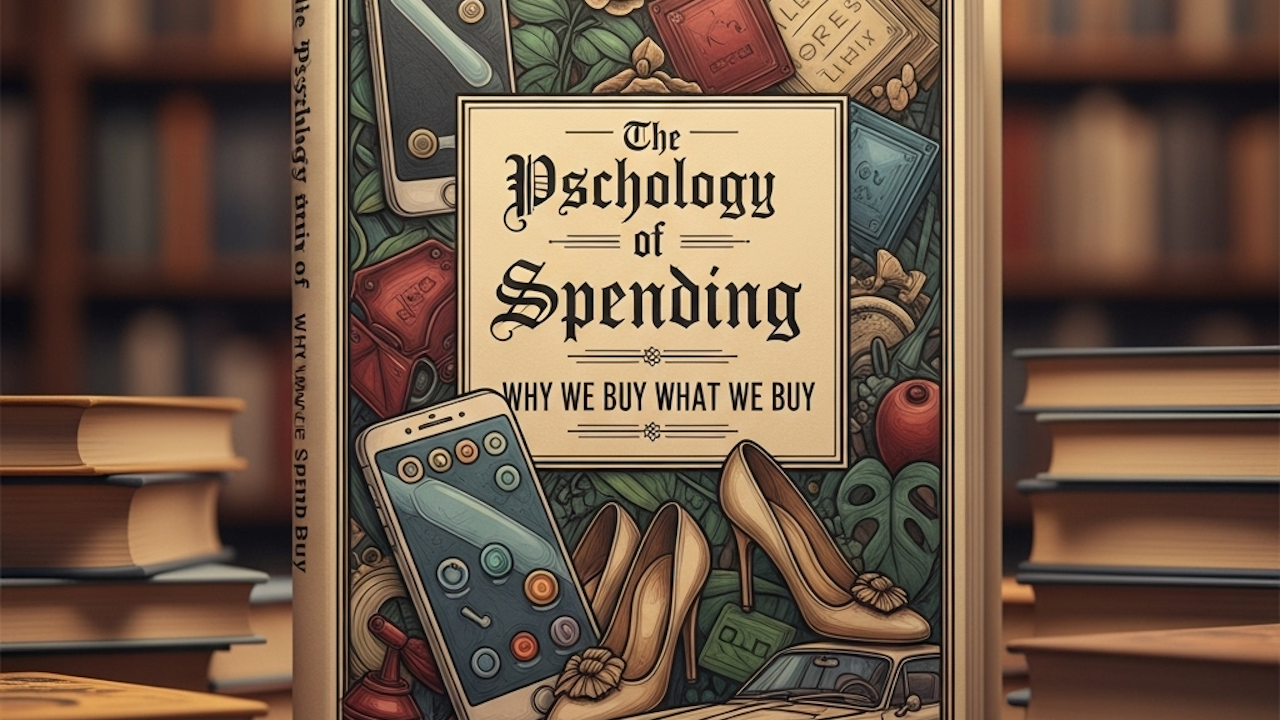The checkout beep. The satisfying thwump of a new package landing on the doorstep. The almost ritualistic swipe of a card. These are commonplace occurrences in our daily lives, yet beneath the surface of these simple transactions lies a complex and fascinating interplay of psychological forces that drive our purchasing decisions. Understanding the psychology of spending – why we buy what we buy – offers profound insights into human behavior, motivations, and even our sense of self. It moves beyond simple economic models of supply and demand, delving into the intricate web of emotions, biases, and social influences that shape our consumer choices.
One of the most powerful drivers of our spending is emotion. We rarely make purely rational decisions, especially when it comes to purchasing goods and services. The allure of happiness, the desire to alleviate boredom or stress, the yearning for belonging – these emotional states often dictate what ends up in our shopping carts. Marketing campaigns are often meticulously crafted to tap into these emotions. A sleek advertisement for a luxury car might not just highlight its performance specifications; it might evoke feelings of success, status, and even freedom. Similarly, the comforting aroma emanating from a bakery can trigger feelings of nostalgia and warmth, leading to an impulse purchase of a pastry. This emotional connection can override logical considerations of price or necessity, demonstrating the significant role our feelings play in our spending habits.
Beyond immediate emotional gratification, our spending is also deeply intertwined with our sense of identity and social belonging. The products we consume often serve as signals to ourselves and others about who we are or who we aspire to be. We might buy certain brands of clothing to align ourselves with a particular social group, purchase the latest technology to project an image of being modern and innovative, or furnish our homes in a way that reflects our personal taste and values. This phenomenon, often referred to as “conspicuous consumption,” highlights how our purchases can be driven by a desire for social acceptance, admiration, or even differentiation. The subtle (and sometimes not-so-subtle) messages embedded in products and brands contribute significantly to our choices, shaping our identities through the act of consumption.
Cognitive biases, those systematic patterns of deviation from norm or rationality in judgment, also exert a powerful influence on our spending habits. For instance, the “anchoring bias” can lead us to perceive a sale price as a great deal simply because it’s presented alongside a much higher original price, even if the sale price itself is still relatively expensive. The “scarcity effect” makes us value items more when they are perceived as being in limited supply, prompting impulsive purchases for fear of missing out. Similarly, the “framing effect” demonstrates how the way information is presented can significantly alter our purchasing decisions. A product advertised as “95% fat-free” is often perceived more favorably than one labeled as “contains 5% fat,” even though they convey the same information. Understanding these cognitive biases is crucial for both consumers seeking to make more informed decisions and businesses aiming to ethically influence purchasing behavior.
Furthermore, the power of social influence cannot be overstated. We are inherently social creatures, and our purchasing decisions are often shaped by the people around us. We might be influenced by the recommendations of friends and family, the endorsements of celebrities, or the perceived popularity of a product as indicated by online reviews or social media trends. This “social proof” provides a shortcut for decision-making, especially when we are uncertain about a product or service. The fear of missing out (FOMO), often amplified by social media, can also drive us to make purchases that we might not otherwise consider, simply because we see others acquiring and enjoying them.
The rise of digital platforms and e-commerce has further complicated the psychology of spending. The ease and convenience of online shopping, coupled with sophisticated algorithms that personalize recommendations and targeted advertising, create a powerful environment for consumption. The lack of physical interaction with products can sometimes diminish our sense of their real cost, making it easier to accumulate purchases with a few clicks. Moreover, the constant exposure to curated online personas and idealized lifestyles can fuel desires and create a sense of inadequacy, leading to further consumption in an attempt to bridge the perceived gap.
In conclusion, the psychology of spending is a multifaceted field that reveals the intricate interplay of emotions, identity, cognitive biases, and social influences that drive our purchasing decisions. It highlights that our choices are rarely purely rational but are deeply rooted in our human desires, aspirations, and social connections. By understanding these underlying psychological forces, we can gain greater awareness of our own spending habits, make more informed choices, and ultimately navigate the complex world of consumption with greater intention and control. The checkout beep may sound simple, but the journey that leads us to that point is a rich tapestry of human psychology, constantly evolving in response to our changing world.

